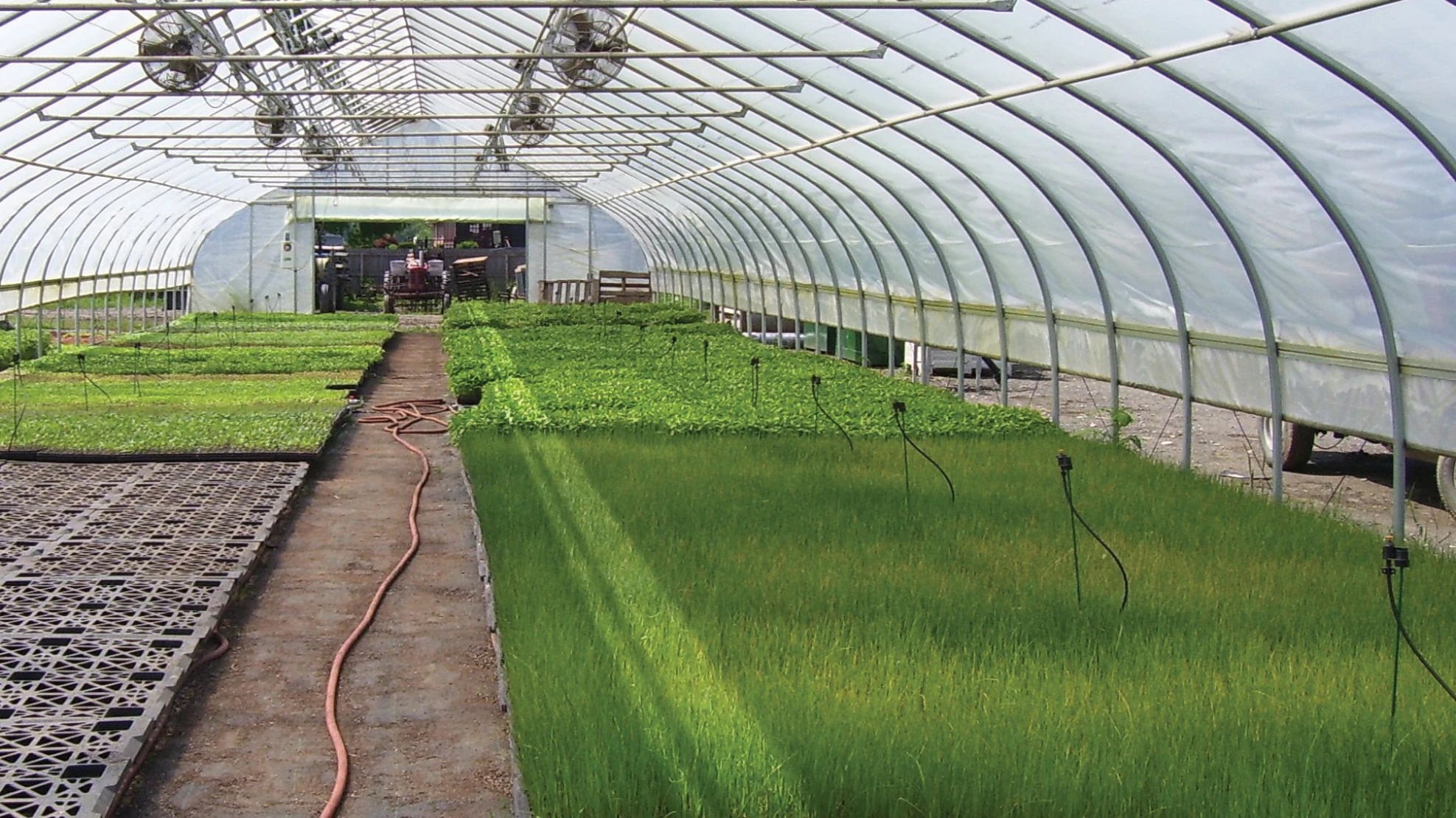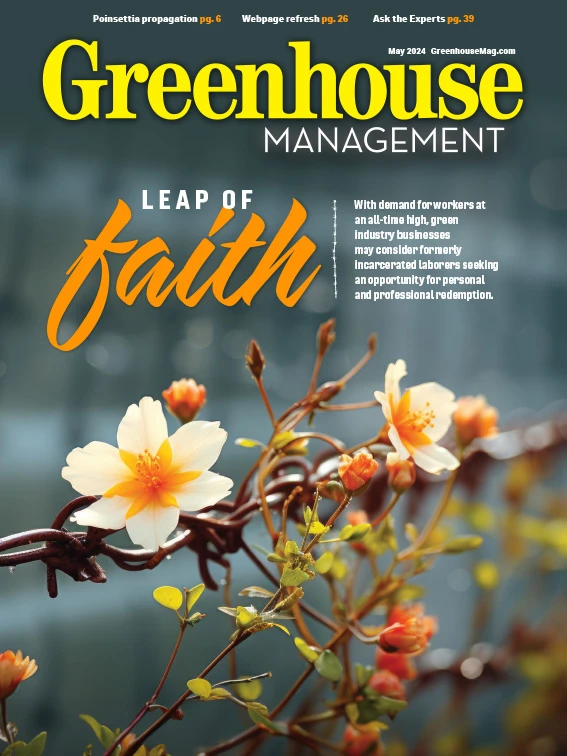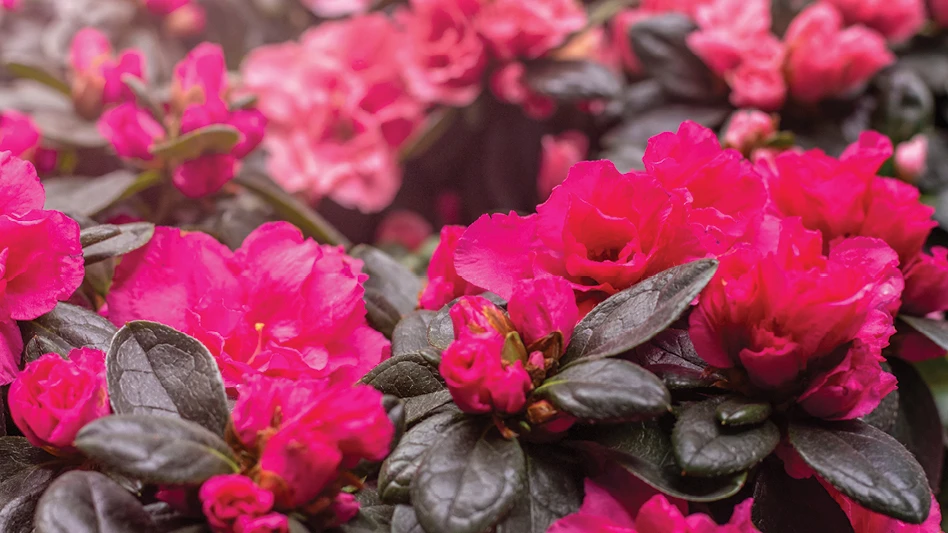
Photos by John Bartok Jr.
With warm weather here, watering plants becomes more important and time-consuming. Here are a few ideas that can make the irrigation system more efficient.
1. Undersized pipes can affect flow
Whether it is by hand-watering or an automatic system, the correct supply pipe size is important to get good coverage. Water flow in a pipe is affected by the pressure, pipe length and number of fittings. Most systems should have a pressure switch and pressure tank that provides water at between 40-60 pounds per square inch (psi) of pressure. Lower pressure reduces flow, and higher pressure may damage the plants.
A 1-inch plastic supply pipe will provide about 13 gallons per minute (gpm) without losing too much pressure to friction loss. This is not adequate to supply two 5/8-inch diameter hoses to full capacity. It is also not adequate to provide water for more than a dozen 1-gallon/minute nozzles in an overhead irrigation system. The generally recommended flow rates for 100 feet of plastic pipe are shown in the table (left). For longer runs, the flow rate decreases more.
2. Use shorter hoses
Friction loss in rubber hose is considerably more than in plastic pipe. For example, at 8 gpm, friction loss in ¾-inch plastic pipe is 5.8 psi/100 feet, whereas in ¾-inch hose, the loss is 8.8 psi. It is better to pipe the water supply to the ends and middle of a 100-foot greenhouse and then use 50-foot hoses to get the coverage.

3. Install a hose cart or Hi-Hose cable support
These devices keep hoses out of the aisle, where they can be damaged or tripped on. They also keep the nozzle clean, reducing the chance of spreading plant diseases while watering.
4. Add an intermediate water storage tank
When an adequate water supply for peak irrigation needs is not available, an intermediate storage tank should be installed. This is located between the well and the pressurized distribution system. This reservoir can be a non-pressurized concrete, wood or steel tank that serves as a primary source of supply for the pressure pump. It should be sized to make up the difference between the well yield and the maximum demand. The intermediate tank is filled during the evening or night when irrigation is not needed.
For most systems, supplying the water from the intermediate tank to a pressure tank is desirable to keep the pump from starting too frequently. In larger greenhouses, pumping directly from the intermediate tank to the more extensive irrigation system may be best.
There is another advantage to an intermediate reservoir. If the tank is located aboveground in the greenhouse or headhouse, the water can be tempered before irrigating the plants. It could also be heated from a hot water heater or boiler.
5. Protect your water system with a good filter
Suspended solids in the water source need to be removed to prevent clogged piping, valves, nozzles and emitters. Screen or disk filters work well for most applications. A 100-mesh filter is fine enough for most hand and overhead sprinkler applications. A 200-mesh filter is usually recommended for micro-irrigation. The filter should be sized so that the flow rate is large enough to handle the peak demand.
Maintenance on a filter is also important. Installing pressure gauges on both sides of the filter will indicate when it is becoming clogged. When the pressure variation between the two gauges exceeds about 10%, the filter should be cleaned.
6. Save labor with an irrigation controller
Electronic controllers are available from one to 20 or more zones. Features available include easy programming, manual override of any zone, variable start and run time, activation during daylight, battery backup and remote control. Special controllers are available for misting, boom irrigation and locations where power is not available. A controller will operate your irrigation system when you are not available. 
7. Design the automatic watering system for uniform coverage
The most uniform watering is achieved with flood benches, flood floors or a boom system. Drip systems do a good job if pressure compensating nozzles are used and the supply pipes are not too long. In overhead systems, the design should include double or triple overlap of nozzle patterns.
Nozzle selection should be based on the water pressure and desired irrigation rate. Select a nozzle that has a droplet size that will penetrate the foliage and minimize drift. Follow the manufacturer’s recommendation for spacing and coverage. Monitor pressure at the nozzle. Look for variations in the pattern that indicate plugging or wear. Run a cup test which involves measuring the irrigation water caught in a series of cups laid out on a regular grid system throughout the growing area.

8. Avoid waste
Design and operate the irrigation system to limit the amount of wasted water. Avoid watering the aisles and walls. This will save on pumping costs and extend the water supply. Use anti-drip nozzles and repair any system leaks.
As water supplies become smaller due to drought and overdevelopment, conservation becomes more important. Good system design and control can extend the water source and provide more uniform watering.

Explore the May 2024 Issue
Check out more from this issue and find your next story to read.
Latest from Greenhouse Management
- Growing enlightened
- American Floral Endowment awards 17 organizations $60,700 in educational grants
- Floral businesses invited to join Society of American Florists' Petal It Forward event in October
- Bioline AgroSciences acquires Viridaxis to strengthen leadership in aphids biocontrol
- Ryley Leech joins JumpLights as vice president of sales
- Meet the Retailers' Choice Awards from 2025 Farwest Show
- Added value
- National Garden Bureau announces featured crops for 2026 'Year of the' program






